South Sea Pearl vs. Akoya Pearl: Which One Should You Choose?

Pearls have been prized for their elegance for centuries, with their subtle glow and iridescent beauty making them a popular choice for jewelry.
However, selecting the right type of pearl can be challenging, with South Sea and Akoya pearls being two popular options with distinct differences in size, color, and value.

Choosing the right pearl is crucial to ensure that you invest in a piece of jewelry that complements your style and suits your budget.
In this blog post, we will discuss the differences between South Sea and Akoya pearls to help you decide which is the perfect choice.
Akoya Pearls
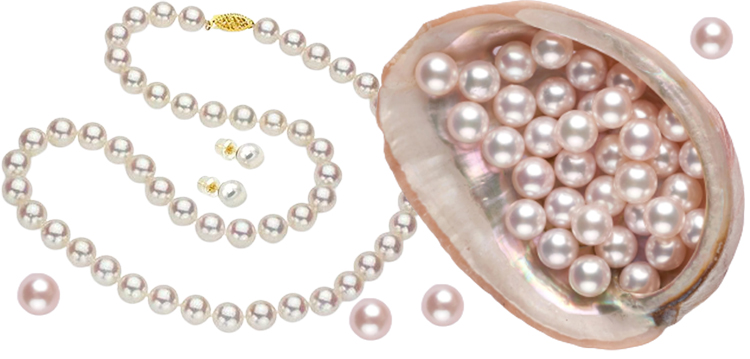
Akoya pearls are saltwater pearls cultivated primarily in Japan, China, and Vietnam.
Here are some of the characteristics of Akoya pearls, how they are farmed, and their pros and cons:
Characteristics of Akoya Pearls
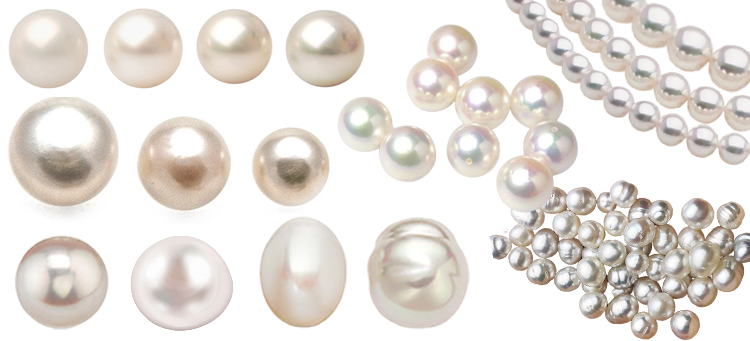
● Size: Akoya pearls are typically smaller than South Sea pearls, with an average size of 6-8mm. However, larger pearls up to 10mm can also be found.
● Colour: Akoya pearls are known for their classic white or cream color, with a bright, high luster that gives them a timeless elegance.
● Shape: Akoya pearls are round but can also be slightly oval or baroque.
● Lustre: Akoya pearls have a high luster that is sharp and reflective, which makes them a popular choice for classic, elegant jewelry.
How Akoya Pearls Are Farmed
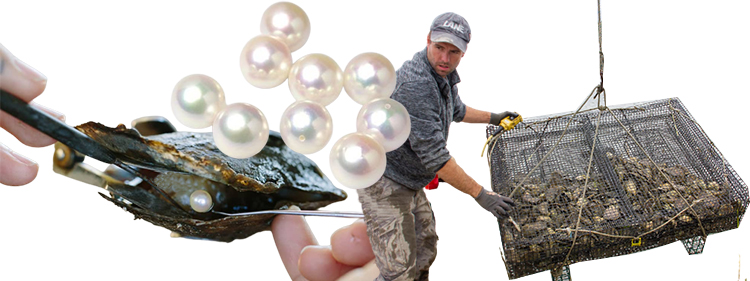
Akoya pearls are farmed by inserting a small bead nucleus and a small piece of donor mantle tissue into the oyster.
This stimulates the oyster to produce a pearl, which takes 10-18 months to form.
The oysters are kept in netted baskets in the ocean, where they are tended to carefully until harvested.
Pros and Cons of Akoya Pearls
Pros:

● Classic elegance: Akoya pearls are a classic choice for jewelry, thanks to their bright white color, round shape, and high luster.
● Affordable: Akoya pearls are more affordable than South Sea pearls, which makes them an accessible option for those looking for high-quality pearls without breaking the bank.
● High-quality: Akoya pearls are known for their high quality, sharp luster, and smooth surface finish, making them an excellent jewelry choice.
Cons:
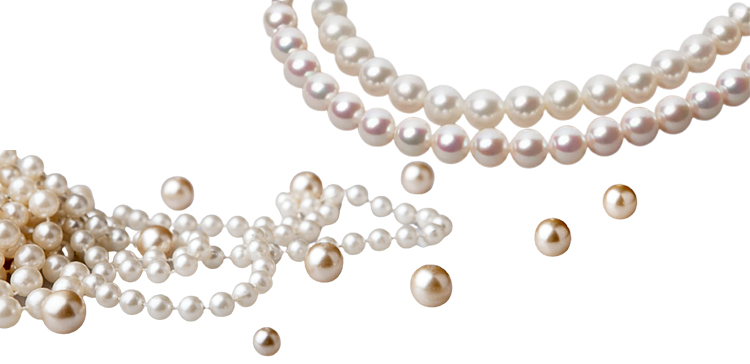
● Limited size: Akoya pearls are smaller than South Sea pearls, which can be a drawback for those looking for larger pearls to make a statement.
● Sensitivity: Akoya pearls are more sensitive to environmental changes than others, which may require more care and attention.
● Limited colors: Akoya pearls are white or cream, which may limit their versatility for some jewelry designs.
South Sea pearls
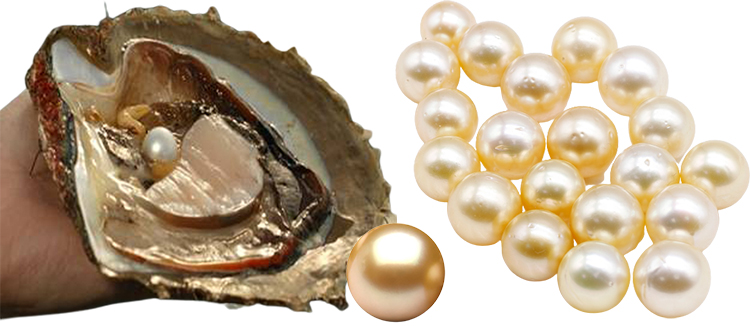
South Sea pearls are valuable and sought-after types of pearls worldwide.
They are saltwater pearls primarily farmed in the warm, tropical waters of Australia, Indonesia, and the Philippines.
Here are some of the characteristics of South Sea pearls, how they are farmed, and their pros and cons:
Characteristics of South Sea Pearls
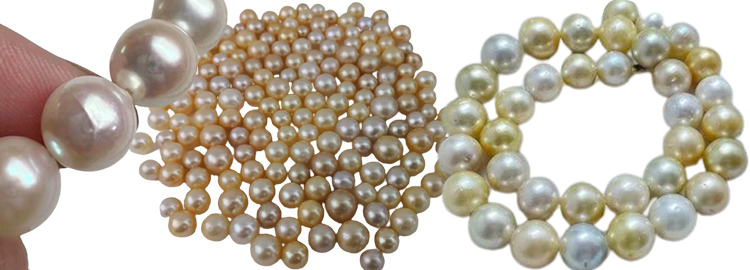
● Size: South Sea pearls have an average size of 10-15mm. Some pearls can be as large as 20mm, making them a striking choice for statement jewelry.
● Colour: South Sea pearls come in various colors, including white, cream, gold, and silver. The colors are typically soft and subtle, with a natural radiance that gives them a unique glow.
● Lustre: South Sea pearls are renowned for their high luster, resulting from the thick nacre layers formed over a long period. This gives the pearls a soft, glowing sheen that is unmatched by other types of pearls.
How South Sea Pearls Are Farmed
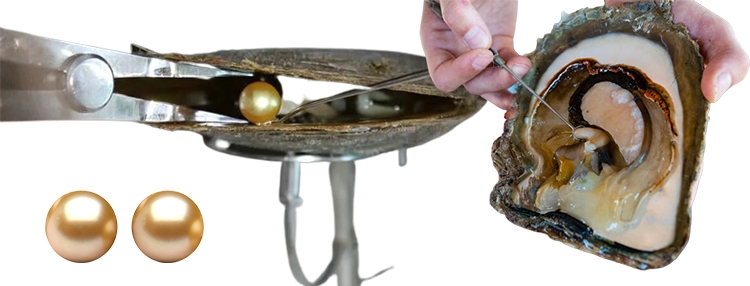
South Sea pearls are farmed using a similar technique to other saltwater pearls. Oysters are grown in ocean farms, and bead nuclei are inserted into the oysters to stimulate the formation of pearls. However, the farming process for South Sea pearls is more complex than other pearls, as the oysters take longer to mature, and the pearls take longer to form. Growing a single South Sea pearl can take up to five years, and only a small percentage of oysters will produce a high-quality pearl.
Pros and Cons of South Sea Pearls
Pros:
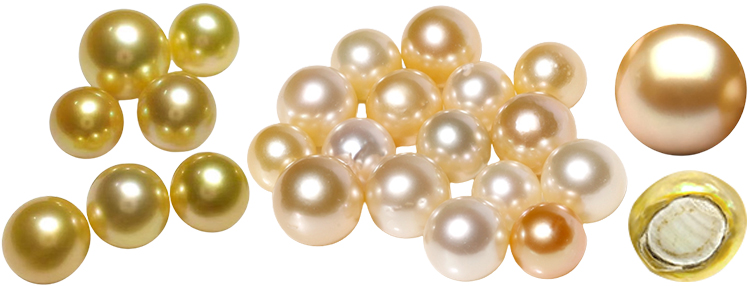
● Size and beauty: South Sea pearls' large size and exquisite beauty make them a coveted choice for high-end jewelry.
● Rarity: South Sea pearls are relatively rare, which adds to their value and exclusivity.
● Lustre: South Sea pearls have a distinctive luster that collectors and jewelry lovers highly prize.
● Durability: South Sea pearls have a thick nacre layer, which makes them more durable and resistant to wear and tear.
Cons:
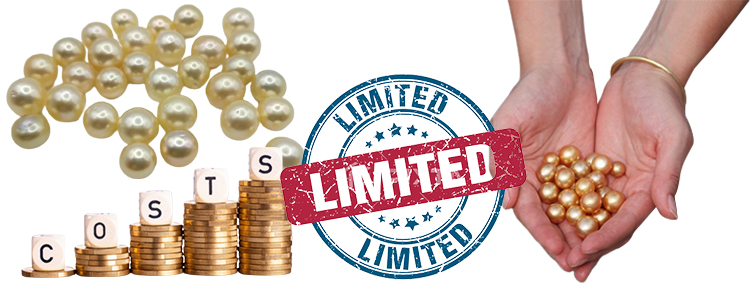
● Cost: South Sea pearls are some of the most expensive, with prices reaching tens of thousands of dollars per pearl.
● Limited availability: The limited number of farms producing South Sea pearls means they can be difficult to find and purchase.
● Sensitivity: South Sea pearls are more sensitive to environmental changes than others and may require more careful handling and storage to prevent damage.
Comparison between South Sea and Akoya Pearls
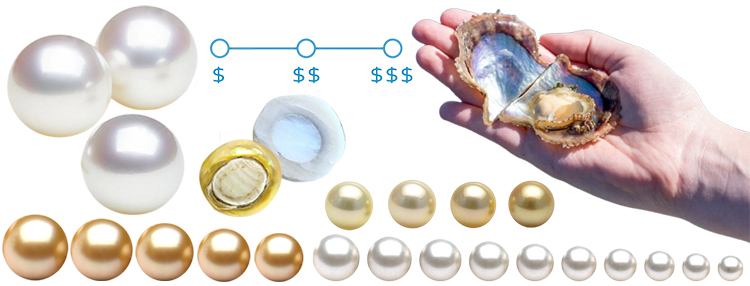
Here's a comparison between South Sea and Akoya Pearls based on their
price range, size range, color range, shape range, luster comparison, durability and longevity comparison, and sustainability comparison:
Price Range

South Sea pearls are generally more expensive than Akoya pearls due to their rarity and size.
The price range for South Sea pearls can range from $100 to $10000.
On the other hand, Akoya pearls are more affordable, with a price range typically from $100 to $1000.
Size Range
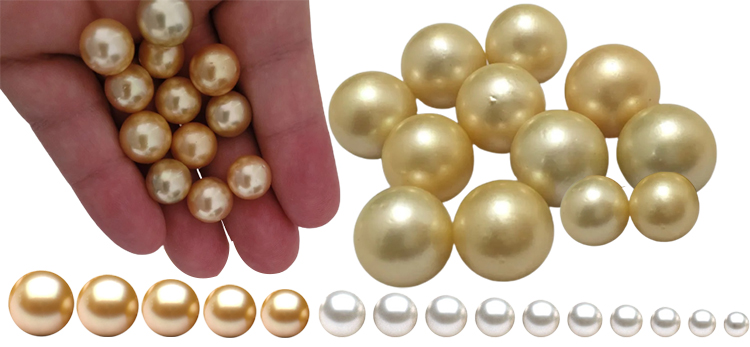
South Sea pearls are larger than Akoya pearls, with an average size of 10-16mm, while Akoya pearls are usually around 6-8mm.
South Sea pearls can be found up to 20mm in size, whereas Akoya pearls rarely exceed 10mm.
Color Range
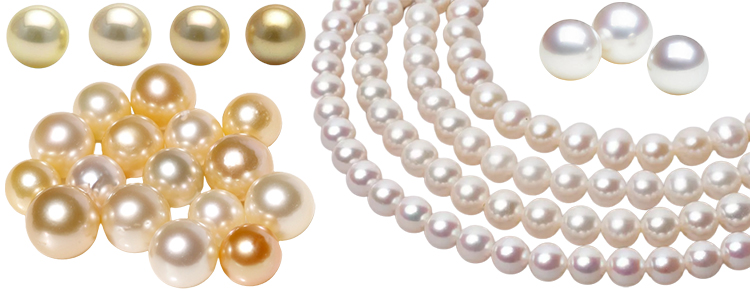
South Sea pearls have a wider range of natural colors, including white, silver, cream, gold, and black.
Akoya pearls are generally white or cream with a bright luster.
Shape Range
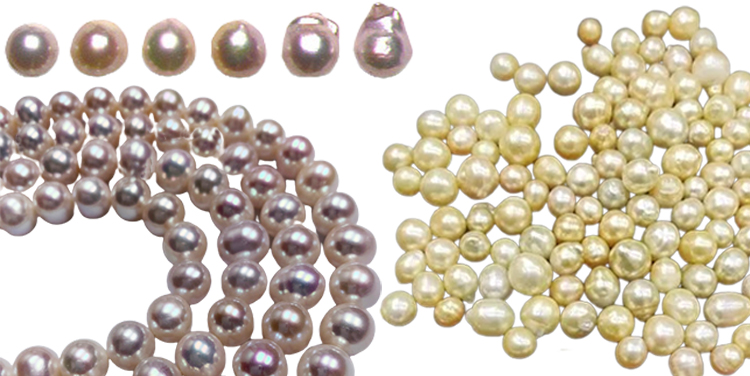
South Sea pearls can be round, oval, button, or baroque in shape.
Akoya pearls are round or slightly oval but can also be baroque.
Luster Comparison
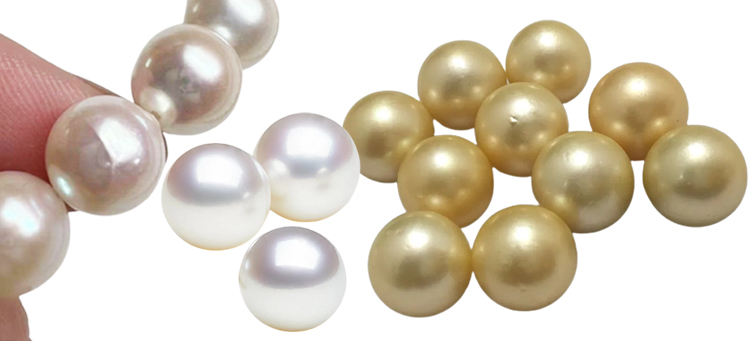
South Sea pearls have a softer luster than Akoya pearls, which have a sharp, bright luster.
Durability and Longevity Comparison
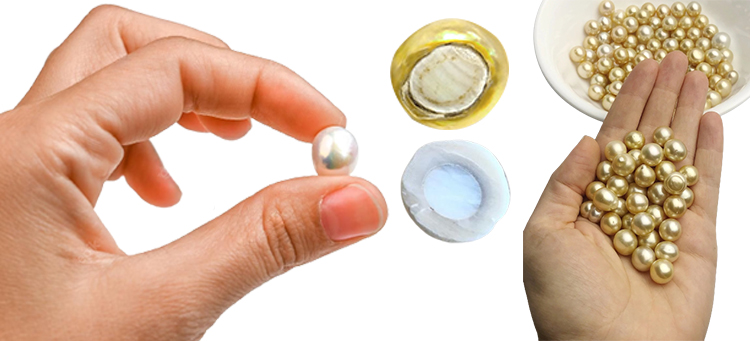
South Sea and Akoya pearls are durable and last for generations with proper care.
However, Akoya pearls are more sensitive to environmental factors like temperature and pollution, which can affect their longevity.
Sustainability Comparison
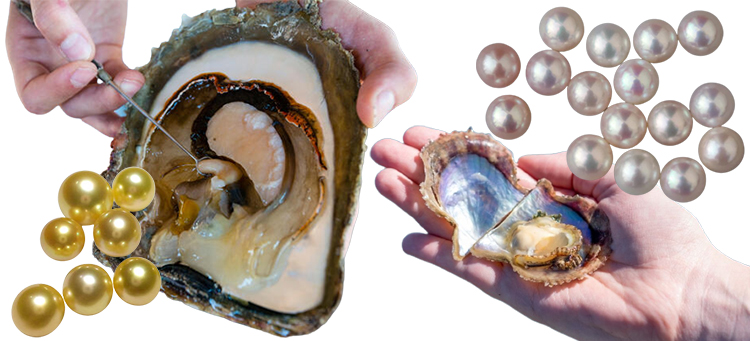
Both South Sea and Akoya pearls are farmed,
but South Sea pearl farming is considered more sustainable as it is done in larger oyster shells, which can help filter and clean the ocean's water.
Akoya pearl farming can be more intensive, requiring more energy and resources to maintain the oysters.
However, sustainable farming practices are becoming more common in the industry.
Factors to Consider When Choosing Between South Sea and Akoya Pearls
There are several considerable factors when deciding between South Sea and Akoya pearls.
Budget:
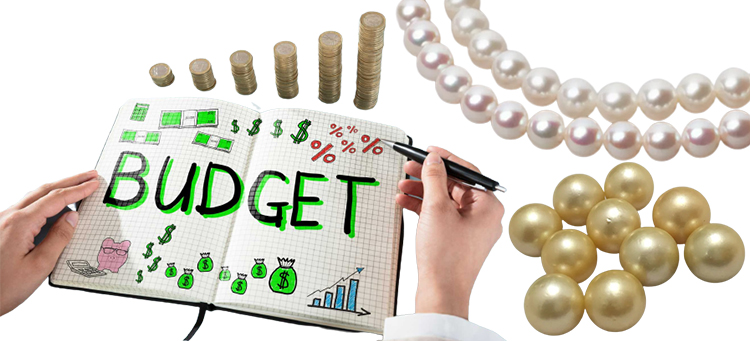
South Sea pearls are generally more expensive than Akoya pearls, so it's important to consider your budget before deciding.
Akoya pearls may be more affordable if you're on a tight budget.
Occasion and Attire:

The occasion and attire can also influence your choice of pearls.
South Sea pearls are a luxurious choice for formal events or weddings, which can add sophistication to an outfit.
On the other hand, Akoya pearls are perfect for everyday wear, and you can dress them up or down.
Skin Tone:
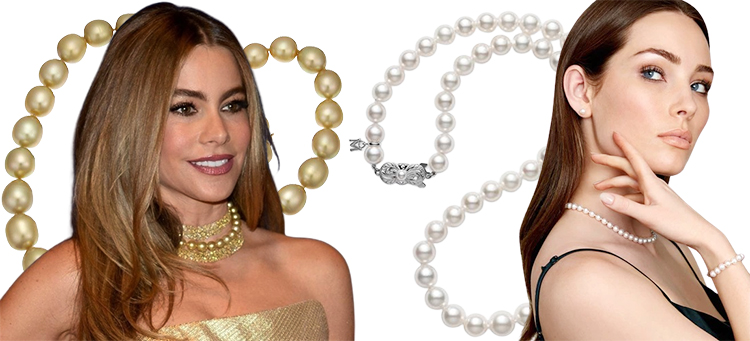
Consider your natural skin tone when choosing between South Sea and Akoya pearls.
South Sea pearls have a warm, golden hue that can complement darker skin tones, while Akoya pearls have a bright luster that can flatter lighter skin tones.
Personal Preference and Style:
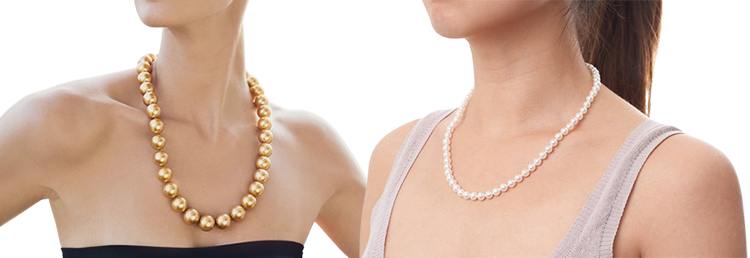
Your style and preferences should also be considered.
South Sea pearls may be the better choice if you prefer larger pearls with a wider range of natural colors.
Akoya pearls may be more appealing if you prefer classic, round pearls with a sharp luster.
Future Use and Investment:
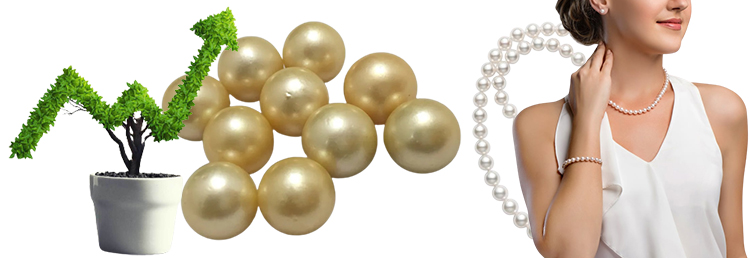
Consider how you plan to use your pearls. South Sea pearls are a better choice if you're looking for an investment piece that will appreciate over time.
However, Akoya pearls may be a better investment if you want a versatile pearl that can be worn often.
Style and Occasion
When it comes to choosing the right pearl type for different styles and occasions, there are a few things to consider:
Style

For a classic and timeless look, Akoya pearls are a popular choice.
Their round shape and high luster make them perfect for elegant and sophisticated styles.
They can be paired with different outfits, from a simple white blouse to a little black dress.
South Sea pearls are an excellent option for a more exotic and luxurious look.
Their larger size and unique golden color make them perfect for statement pieces like bold necklaces and bracelets.
South Sea pearls can add a touch of glamour to any outfit and are especially popular for red-carpet events and other formal occasions.
Occasion
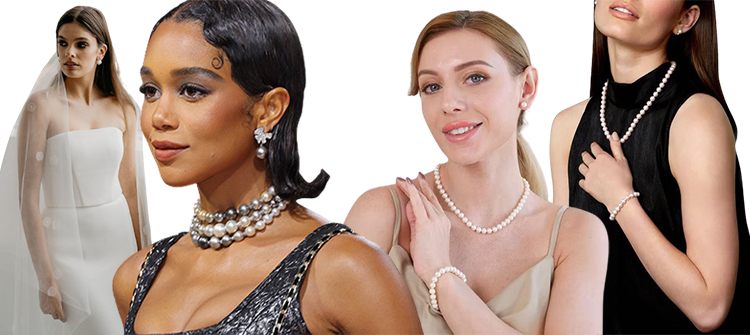
South Sea pearls are great for formal occasions like weddings or galas.
They exude luxury and sophistication and can add elegance to a formal gown or cocktail dress.
For a more casual occasion, Akoya pearls are a great option.
They can be amped up or down and are perfect for a simple outfit.
Examples of popular styles for South Sea and Akoya pearls
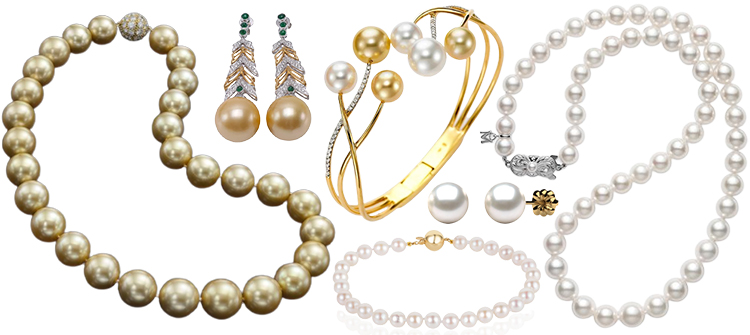
For South Sea pearls, popular styles include statement necklaces, drop earrings, and chunky bracelets.
These pieces are often designed to showcase the pearls' unique size and golden color.
Classic styles such as pearl stud earrings and simple pearl necklaces are popular for Akoya pearls.
These pieces can be worn with various outfits and styles.
Maintenance and Care
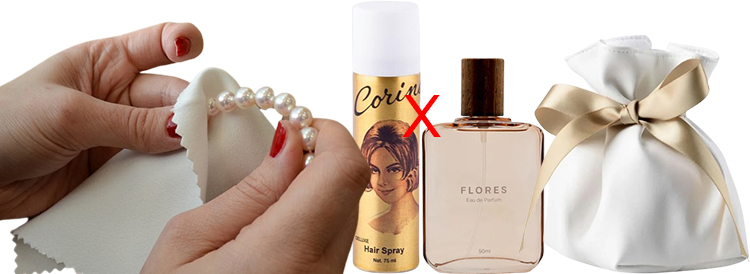
Pearls are delicate and require special care to keep them looking their best.
Here are a few methods for taking care of your pearls:
How to take care of your pearls
● Keep them away from chemicals:
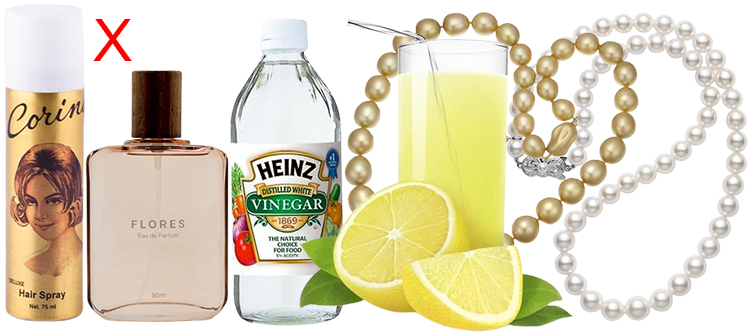
Pearls can be damaged by chemicals, so it's essential to keep them away from perfumes, hairsprays, and other beauty products. Avoiding acidic substances, such as vinegar and lemon juice, is also important.
● Store them carefully:
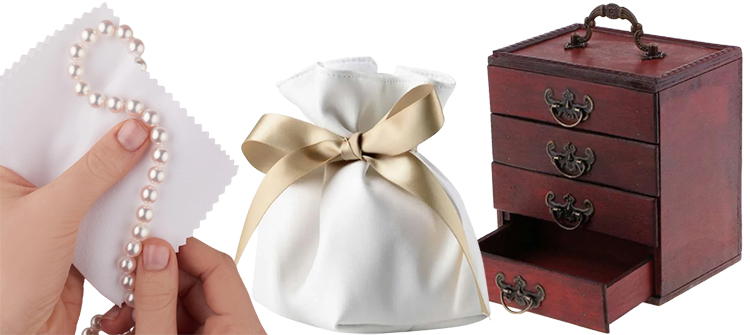
When you're not wearing your pearls, store them in a soft cloth or pouch to safeguard them from scratches and other damage. Avoid storing them with other jewelry, which can scratch or damage the pearls.
● Clean them gently:
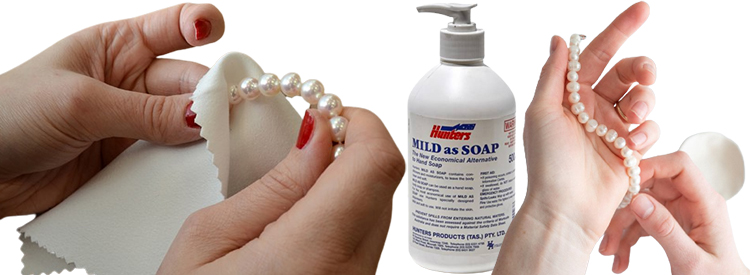
Use a soft cloth or chamois dipped in water to clean your pearls. Avoid using harsh chemicals, which can damage the pearls. You can also apply a mild soap solution, but rinse the pearls thoroughly and dry them carefully.
Maintenance differences between Akoya and South Sea pearls
Akoya and South Sea pearls require similar care, but there are a few differences to remember.
South Sea pearls are larger and more durable than Akoya pearls but are also more sensitive to heat and can be more easily damaged by chemicals.
Akoya pearls are smaller, more delicate, resilient, and can withstand more wear and tear.
Tips for keeping your pearls looking their best
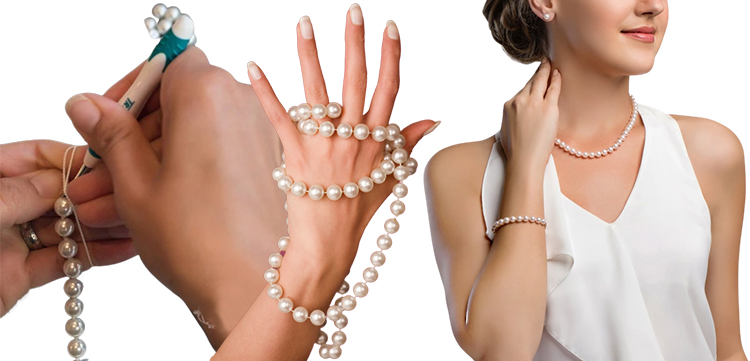
To maintain your pearls at their best, handling them carefully and avoiding exposing them to harsh chemicals and extreme temperatures is important.
You should also have your pearls restrung regularly, as the silk thread can weaken over time.
Finally, wear your pearls often, as the natural oils from your skin can help keep them looking lustrous and beautiful.
Conclusion
South Sea and Akoya pearls are exquisite and valuable gems with unique characteristics and features.
South Sea pearls are larger, rarer, and more expensive than Akoya pearls, while Akoya pearls are more affordable and are available in a wider range of colors and shapes.
When choosing between these two types of pearls, consider your budget, personal style, occasion, and future use. Ultimately, the best choice depends on your individual preferences and needs.
Whichever type of pearl you choose, with proper care and maintenance, you can enjoy its beauty and elegance for years.
Frequently Asked Questions
What is the difference between natural and cultured pearls?

Natural pearls are created without human intervention, whereas cultured pearls are grown under controlled conditions with human assistance.
Cultured pearls are more common than natural pearls and are more affordable.
How do I know if a pearl is real or fake?

Real pearls feel heavier and have a natural luster, while fake pearls feel lighter and may have a uniform shine.
You can also rub two pearls together to see if they have a slightly rough texture, a sign of real pearls.
What is the difference between freshwater, Tahitian, and South Sea pearls?

Freshwater pearls grow in freshwater lakes and rivers and are typically smaller and less expensive than saltwater pearls.
Tahitian pearls are also saltwater but are larger and come in various dark colors.
South Sea pearls are the largest and rarest of all, grown in the warm waters of the South Pacific.
What is a pearl's nacre thickness, and why does it matter?

The nacre thickness refers to the layers of material that form around the nucleus of the pearl—thicker nacre results in a stronger, more durable pearl that is less likely to crack or chip.
Can pearls be resized or repaired?

Pearls can be strung onto a new strand or restrung if the current string is damaged.
However, pearls cannot be resized like other gems because they are not cut and shaped like them.
How can I tell if a pearl is of good quality?
Good quality pearls have a high luster, smooth surface, and uniform color.
They should also be round or near-round in shape, with minimal blemishes or irregularities.
The size and thickness of the nacre can also affect the quality of the pearl.


Leave a Comment